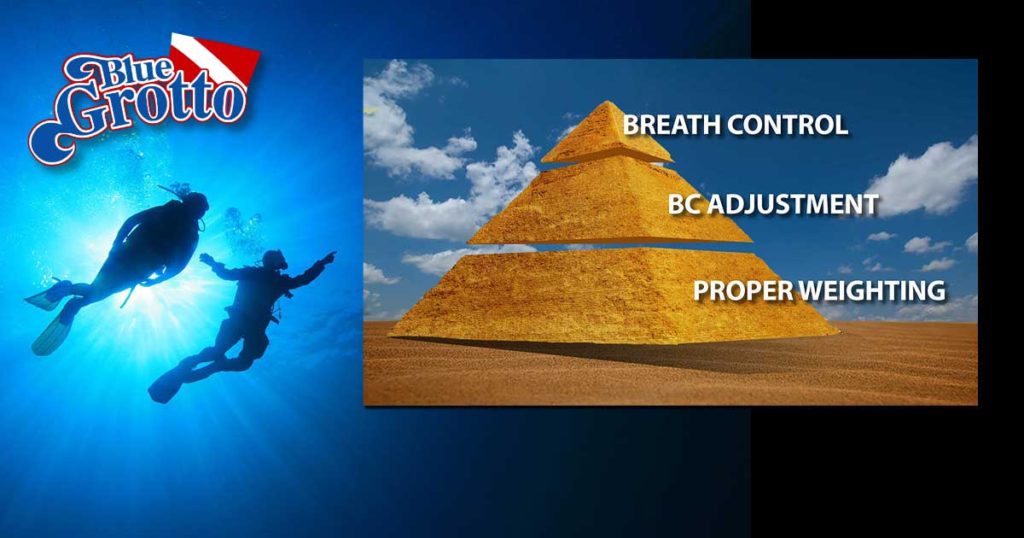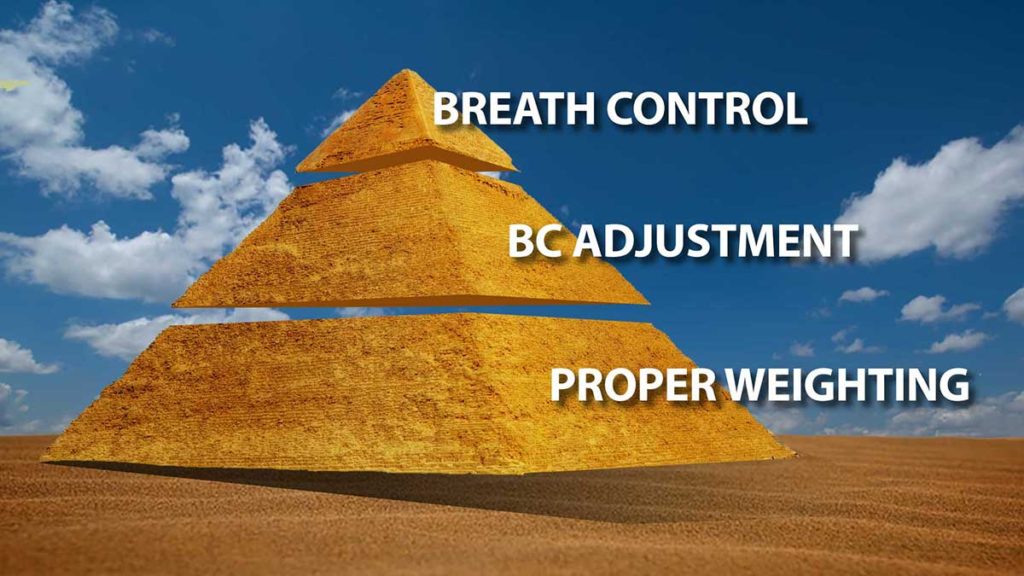Buoyancy control is a skill that stymies many new divers. There are several reasons for this. Among them are the five myths we will cover in this article.
05 “There is nothing wrong with overweighting”
This statement assumes you can always use your BC to compensate for unnecessary weight. Bad idea.
Overweighting can cause a host of problems. Among them:
- It will require you to make more frequent buoyancy adjustments.
- It can make it harder to maintain a horizontal body position.
- It puts you at greater risk in an emergency.
To learn why, see Why you should wear only the weight you need.
04 “Wear 10% of your body weight”
No magic formula can tell you precisely how much weight you need. Formulas like this can give you a starting point when determining how much lead to use. But you will still need to experiment to see what this is.
03 “Begin your ascent with your BC empty”
We actually heard an instructor say this the other day. She was trying to make the point that you should not add air to your BC while ascending; you should only do so after surfacing.
However, if you have maintained neutral buoyancy, you will most likely begin your ascent with some air in your BC. Of course, as you ascend, this air will expand, and you must vent it periodically to control your ascent rate. But you don’t have to empty your BC first. This is normal.
We think the instructor in question may have just misspoken (this was, after all, the first class she’d ever taught). However, were students to take her at her word, they would completely vent their BCs before ascending and try to make it to the surface solely by kicking.
Of course, this would make ascending much more difficult. And, were students to stop kicking during their ascent, they would sink back to the bottom. This could potentially be very dangerous.
02 “A properly weighted dive will float at eye level”
This statement is particularly disturbing because you find it in so many training agencies’ learning materials. The fact is, where a properly weighed diver will float at the beginning of a dive will depend on several factors, including:
- Exposure suit thickness and compressibility
- Cylinder size and potential buoyancy shift due to use
- Lung volume
What is often missing from this statement is whether you perform your pre-dive weight check with your lungs half full or completely full. A good answer is with the lungs half full or what is known as mid-tidal volume. This is the average lung volume around which your overall buoyancy revolves.
Let’s say a diver in a dive skin or very thin wetsuit were to weight themselves so that they floated at eye level with no air in their BC. They might be able to sink by exhaling fully. However, as soon as they took their first breath underwater, they would pop right back to the surface.
Again, you can only determine proper weighting through experimentation. If you sink like a rock after venting your BC, you probably have too much weight on. However, if you must fight to get down, you probably have too little.
In the Wear only the weight you need article, you will read about how to conduct a much more accurate weight check. And guess what? It takes place at the end of the dive, not at the beginning.
01 “Buoyancy control is all about pushing buttons”
This is not so much a statement as it is the impression students often get during entry-level diver training. There is a lot of emphasis on controlling buoyancy through BC use. However, what students don’t get is an understanding of all the components that go into buoyancy control.
This is the Buoyancy Control Pyramid. It identifies the three elements that go into effective buoyancy control and their relative importance. Obviously, BC use plays an important role. But it’s not the most crucial element.
As the illustration shows, proper weighting is the foundation upon which all the other elements of buoyancy control rest. If you are grossly overweighted or underweighted, pushing buttons on a BC won’t help. If properly weighted, all other aspects of buoyancy control become easier.
To learn more, see the article Understanding the Buoyancy Control Pyramid.



